
Baku
Baku is the capital and largest city of Azerbaijan, as well as the largest city on the Caspian Sea and of the Caucasus region. Baku is located 28 metres (92 ft) below sea level, which makes it the lowest lying national capital in the world and also the largest city in the world located below sea level. Baku lies on the southern shore of the Absheron Peninsula, alongside the Bay of Baku.
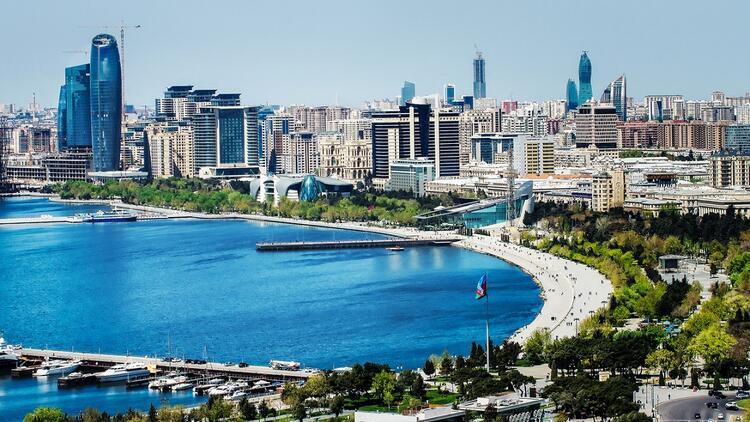

Martyrs' Lane
The burial place of Azerbaijani Turks and Turkish Turks killed in the Baku Battle in 1918. Between 1924-1990, the name of Hiyaban was changed and the Bolsheviks built entertainment complexes here and changed its name. After the Black January event in 1990, this area was again named "Martyrs' Lane"
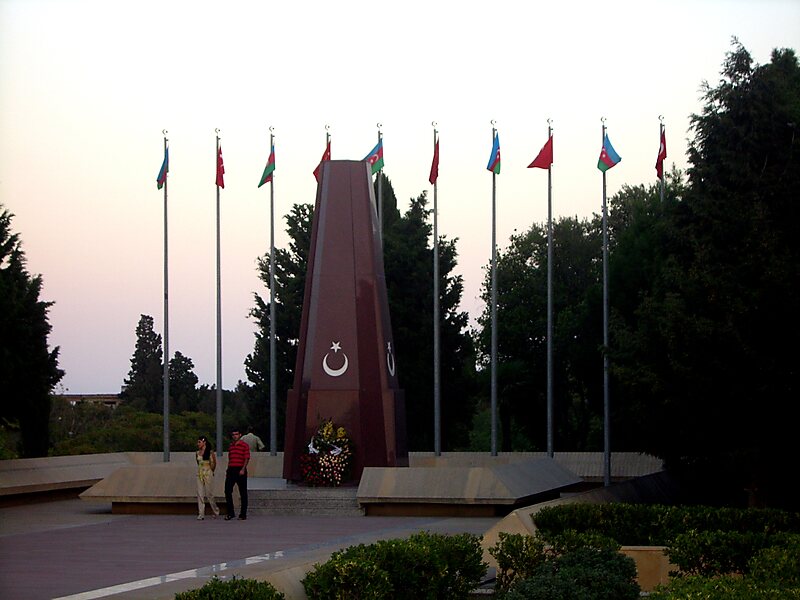
In 1990, the people gathered in Baku Square to protest the massacre and exile of the Turks in Armenia and the occupation of Azerbaijani lands by Armenia, were massacred by the Soviet army that entered Baku.
Old City (Inner City or Walled City)
Old City or Inner City is the historical core of Baku, the capital of Azerbaijan. The Old City is the most ancient part of Baku, which is surrounded by walls which were easily defended.
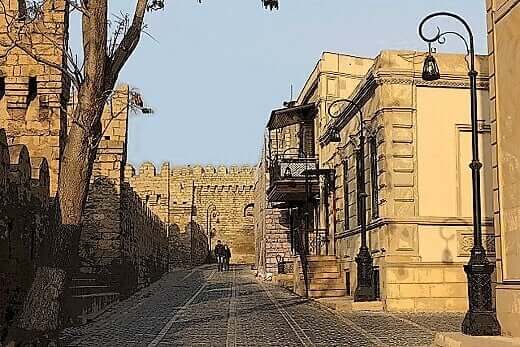
Maiden Tower (Baku)
The Maiden's Tower is a 12th century monument in the Old City (Icheri city) area of Baku. In 2001, it was included in the UNESCO World Heritage List of Historic Monuments. It is one of Azerbaijan's most distinctive national emblems, and is thus featured on Azerbaijani currency notes and official letterheads. The Maiden Tower houses a museum, which presents the story of the historic evolution of Baku city. It also has a gift shop. The view from the roof takes in the alleys and minarets of the Old City, the Baku Boulevard, the house of Isa bek Hajinski and a wide vista of the Baku Bay.

The Tower is covered by cloud of mysteries and legends which are rooted to the history and culture of Azerbaijan. Indeed, some epics became a subject for scenario for ballets and theatre's plays. The Maiden Tower (ballet) is a world-class Azerbaijani ballet created by Afrasiyab Badalbeyli in 1940 and ballet's remake was performed in 1999. Consequent to the receding of the sea shoreline of the Caspian Sea, a strip of land emerged. This land was developed between the 9th and 15th centuries, when the walls of the old city, the palace including the huge bastion of the Maiden Tower were built.
Palace of the Shirvanshahs
The Palace of the Shirvanshahs is a 15th-century palace built by the Shirvanshahs and described by UNESCO as "one of the pearls of Azerbaijan's architecture". It is located in the Inner City of Baku, Azerbaijan and, together with the Maiden Tower, forms an ensemble of historic monuments inscribed under the UNESCO World Heritage List of Historical Monuments. The complex contains the main building of the palace, Divanhane, the burial-vaults, the shah's mosque with a minaret, Seyid Yahya Bakuvi's mausoleum (the so-called "mausoleum of the dervish"), south of the palace, a portal in the east, Murad's gate, a reservoir and the remnants of a bath house. Earlier, there was an ancient mosque, next to the mausoleum. There are still ruins of the bath to the west of the tomb.
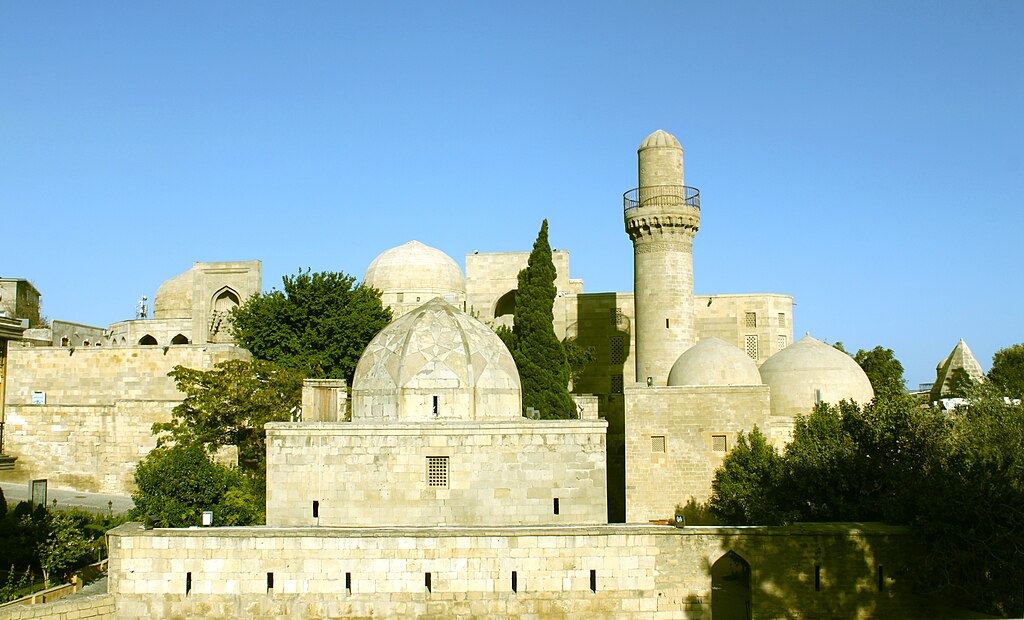
In the past, the palace was surrounded by a wall with towers and, thus, served as the inner stronghold of the Baku fortress. Despite the fact that at the present time no traces of this wall have survived on the surface, as early as the 1920s, the remains of apparently the foundations of the tower and the part of the wall connected with it could be distinguished in the north-eastern side of the palace.
There are no inscriptions that survived on the palace itself. Therefore, the time of its construction is determined by the dates in the inscriptions on the architectural monuments, which refer to the complex of the palace. Such two inscriptions were completely preserved only on the tomb and minaret of the Shah's mosque. There is the name of the ruler who ordered to establish these buildings in both inscriptions is the – Shirvan Khalil I (r. 1417–1462). As time of construction – 839 (1435/36) was marked on the tomb, 845 (1441/42) on the minaret of the Shah's mosque.
Government House, Baku
The Government House of Baku, also known as House of Government, is a government building housing various state ministries of Azerbaijan. It is located on Neftchiler Avenue and faces the Baku Boulevard. The rear side of the building faces busy Uzeyir Hajibeyov Street of central Baku. Government House was designed for 5,500 people

From 1924 to 1927, construction of several large government buildings was planned and included in the budget of Baku. In 1934, the Soviet authorities announced a tender for the construction of the Baku Soviet Palace (later renamed the Government House). The competition was won by well known architects Lev Rudnev, V.O. Munts and K. Tkachenko (participant). With some alterations to the project, the building of the Government House was built between 1936 and 1952. The construction of the building also led to construction of Lenin Square (later renamed to Azadliq Square) in front of the Government House. In 1955, a monument to Vladimir Lenin facing Azadliq Square sculpted by D.M. Garyaghdi was installed in front of the building. In addition to this, a large complex of buildings around the Government House was built in 1960 – 1970s which included hotels "Azerbaijan" and "Absheron", 16-story buildings on Uzeyir Hajibeyov street, building of Azərpoçt. Lenin's statue was later removed during the Azerbaijani independence movement in the aftermath of bloody Black January. A large Azerbaijan flag now stands where Lenin's statue stood. Lenin square was renamed Azadliq Square (Freedom Square).
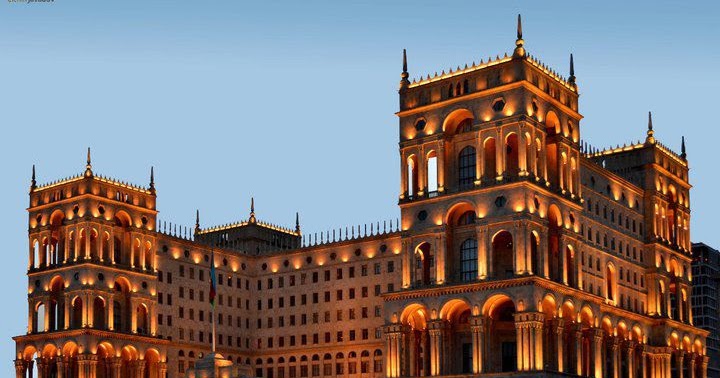
Ateshgah of Baku
The Baku Ateshgah, often called the "Fire Temple of Baku", is a castle-like religious temple in Surakhany town (in Surakhany raion),a suburb in Baku, Azerbaijan.

Based on Persian and Indian inscriptions, the temple was used as a Hindu, Sikh, and Zoroastrian place of worship. "Ātash" is the Persian word for fire. The pentagonal complex, which has a courtyard surrounded by cells for monks and a tetrapillar-altar in the middle, was built during the 17th and 18th centuries. It was abandoned in the late 19th century, probably due to the dwindling of the Indian population in the area. The natural eternal flame went out in 1969, after nearly a century of exploitation of petroleum and gas in the area, but is now lit by gas piped from the nearby city.

The Baku Ateshgah was a pilgrimage and philosophical centre of Zoroastrians from Northwestern Indian subcontinent, who were involved in trade with the Caspian area via the famous "Grand Trunk Road". The four holy elements of their belief were: ateshi (fire), badi (air), abi (water), and heki (earth). The temple ceased to be a place of worship after 1883 with the installation of petroleum plants (industry) at Surakhany. The complex was turned into a museum in 1975. The annual number of visitors to the museum is 15,000.
Burning Mountain (Yanandag)
Yanar Dag is a natural gas fire which blazes continuously on a hillside on the Absheron Peninsula on the Caspian Sea near Baku, the capital of Azerbaijan (a country which itself is known as "the Land of Fire"). Flames jet into the air 3 metres (9.8 ft) from a thin, porous sandstone layer.

Gobustan National Park
Gobustan State Reserve located west of the settlement of Gobustan, about 40 miles (64 km) southwest of the centre of Baku was established in 1966 when the region was declared as a national historical landmark of Azerbaijan in an attempt to preserve the ancient carvings, mud volcanoes and gas-stones in the region.

Gobustan State Reserve is very rich in archeological monuments, the reserve has more than 6,000 rock carvings, which depict people, animals, battle-pieces, ritual dances, bullfights, boats with armed oarsmen, warriors with lances in their hands, camel caravans, pictures of sun and stars, on the average dating back to 5,000-20,000 years.

Gobustan State Historical and Cultural Reserve acquired national status in 2006, and were added to the UNESCO World Social Legacy List in 2007.

Garasu (Mud) Volcanoes
Azerbaijan has the most mud volcanoes of any country, spread broadly across the country. 350 of the 700 volcanoes of the world are in the Azerbaijani Republic

Underground and submarine mud volcanoes are also famed in Azerbaijan. There are more than 140 submarine volcanoes in the Caspian Sea. Eight islands in the Baku Archipelago are mud volcanoes by origination. The other kind of mud volcanoes are wells. Their activity can be observed among strata of various ages. According to the information, mud volcanoes initially began their activity in the territory of Azerbaijan 25 million years ago

NASA geologists studying the planet Mars, concluded that Azerbaijan's mud volcanoes have a similar structure to the uplands of Mars.
Baku Boulevard
Baku Boulevard (Baku Boulevard), which runs parallel to the Baku coastline, was opened in 1909. At the beginning of the last century, the region chosen as the residence by oil traders who lived in Baku was later named the Seaside National Park and taken under protection.
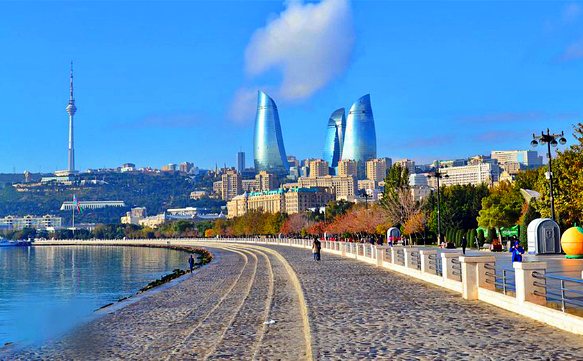
The boulevard, which was created by filling the sea, was expanded after independence and turned into an attraction center with museums, monuments and entertainment centers.
Nizami Street
Nizami Street is a large pedestrian and shopping street in downtown Baku, Azerbaijan, named after classical Persian poet Nizami Ganjavi.
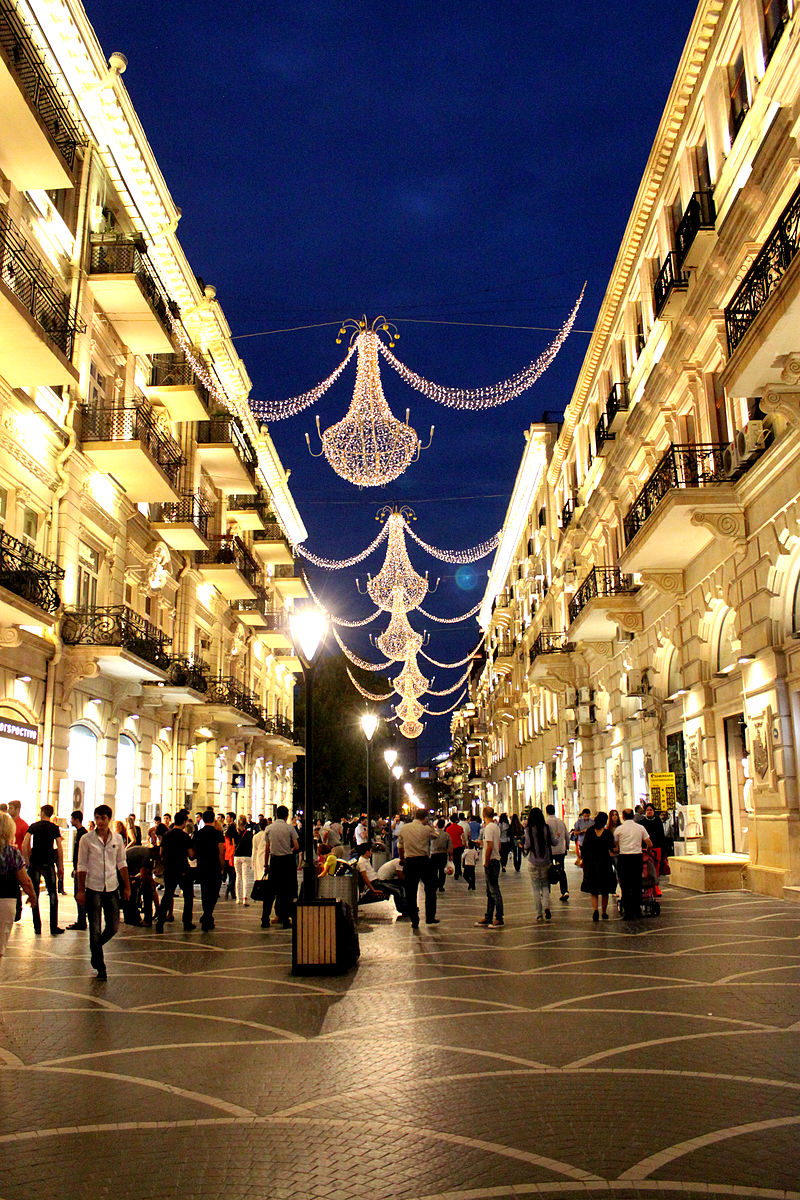
The street's history could be traced back to Baku's town-planning project of 1864. The street runs through the city's downtown from west to east. It begins from Abdulla Shaig Street, in the mountainous part of the city and ends at railroad bed on Sabit Orujov Street, near a monument to Shah Ismail Khatai in “Black City”. The total length of the street is 3,538 m. The traffic-free segment, which begins at the Fountains Square and ends at the Rashid Behbudov Street, is commonly known as Torgovaya ("the merchant street" in Russian).

Nizami Street is home to various outlets, from banks to fashion stores and is one of the most expensive streets in the world. The street also accommodates the embassies of Germany, Norway, the Netherlands and Austria, as well as the European Union Delegation to Azerbaijan. The nearest metro stations are Sahil (red line, south of Nizami Street) and 28 May (both red and green lines, north of the street).

Azerbaijan National Carpet Museum
Azerbaijan National Carpet Museum is a museum located in Baku that displays Azerbaijani carpets and rugs of various weaving techniques and materials from various periods. It has the largest collection of Azerbaijani carpets in the world. First opened on Neftchiler Avenue in 1967, it moved to a new building on the Baku's seafront park in 2014.
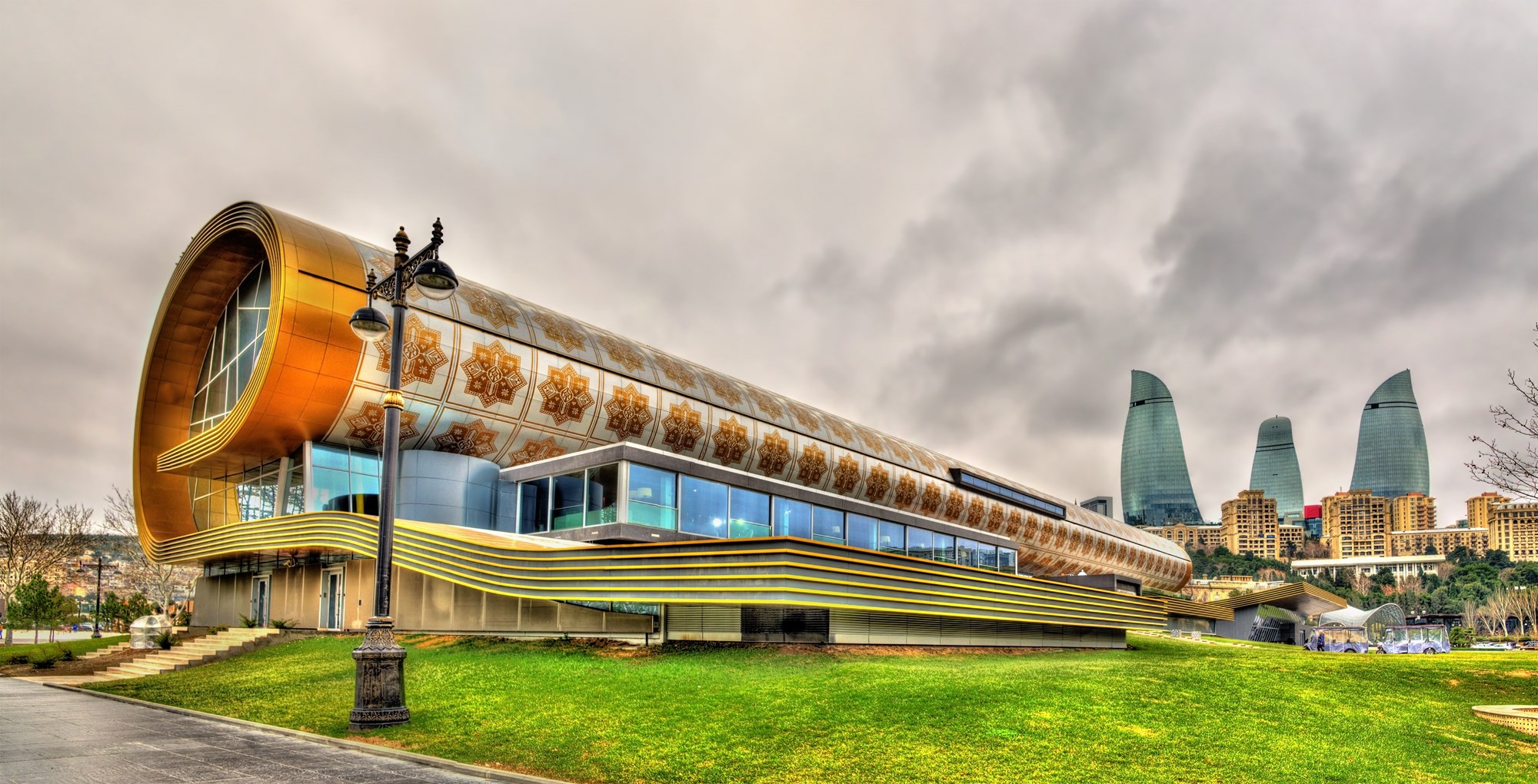
International and Cultural Activities
The city is the scientific, cultural, and industrial centre of Azerbaijan. become an important venue for international events. It hosted the 57th Eurovision Song Contest in 2012, the 2015 European Games, 4th Islamic Solidarity Games, the European Grand Prix in 2016, the Azerbaijan Grand Prix since 2017, hosted the final of the 2018–19 UEFA Europa League, and was one of the host cities for UEFA Euro 2020.
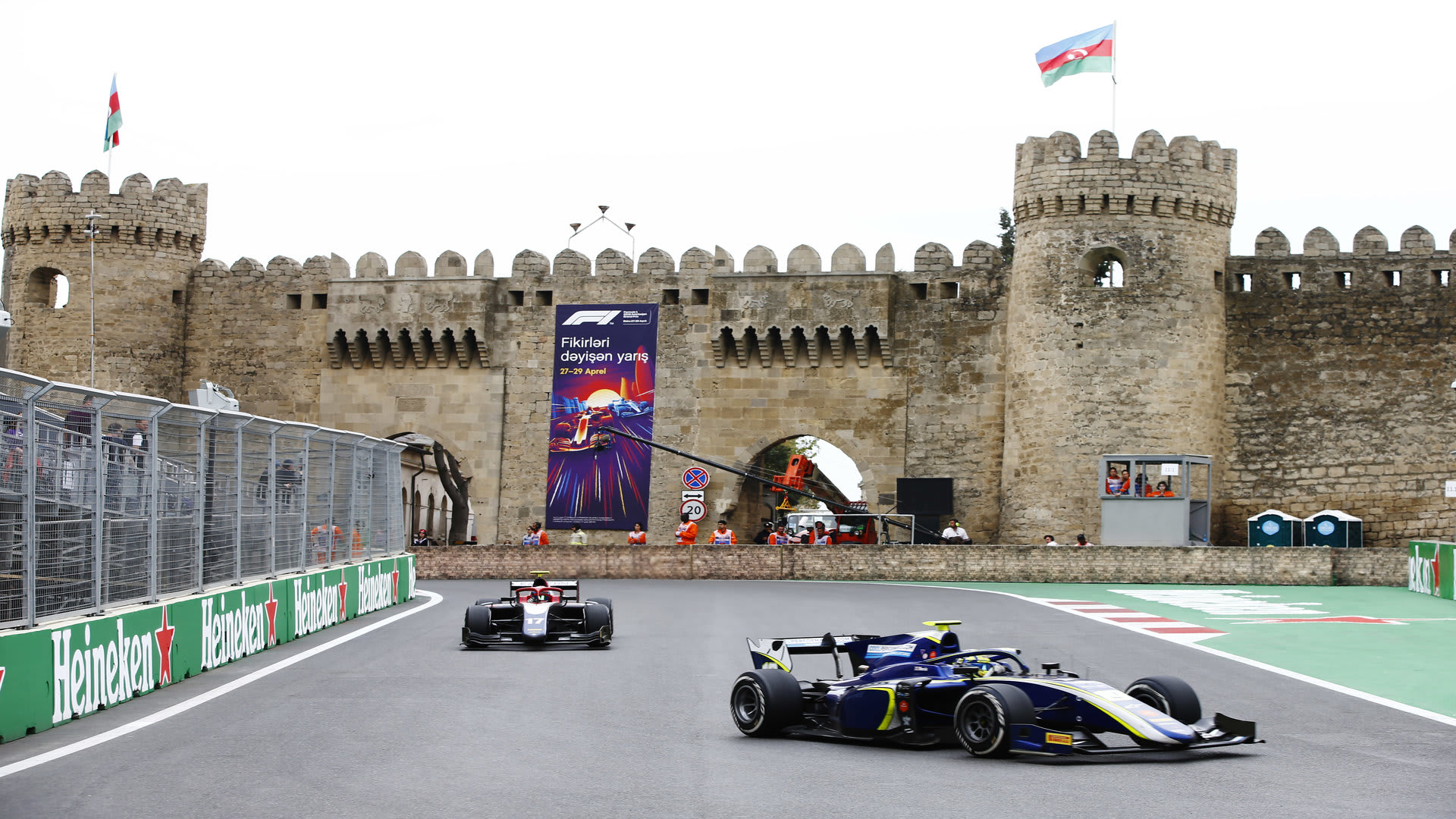
Participating Countries


























































